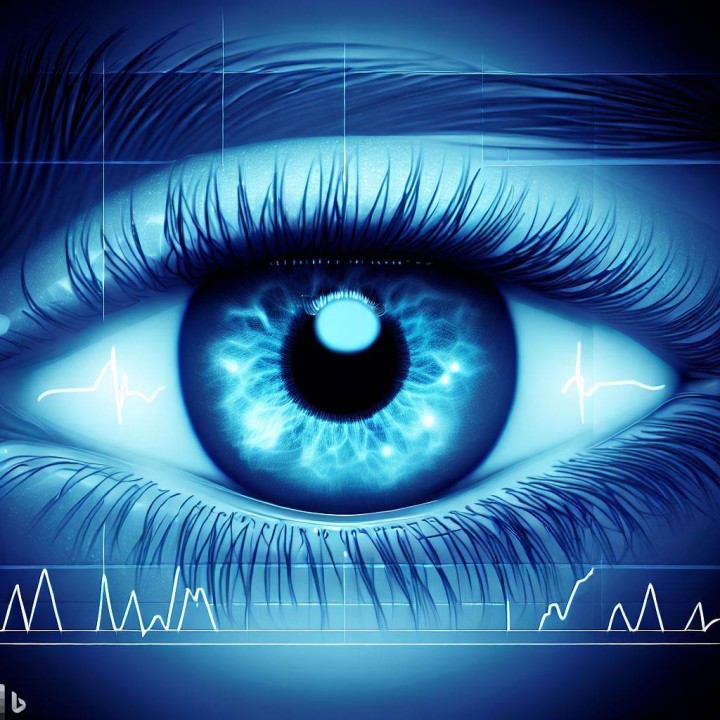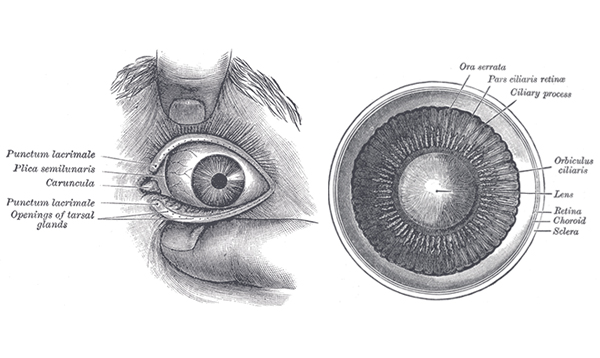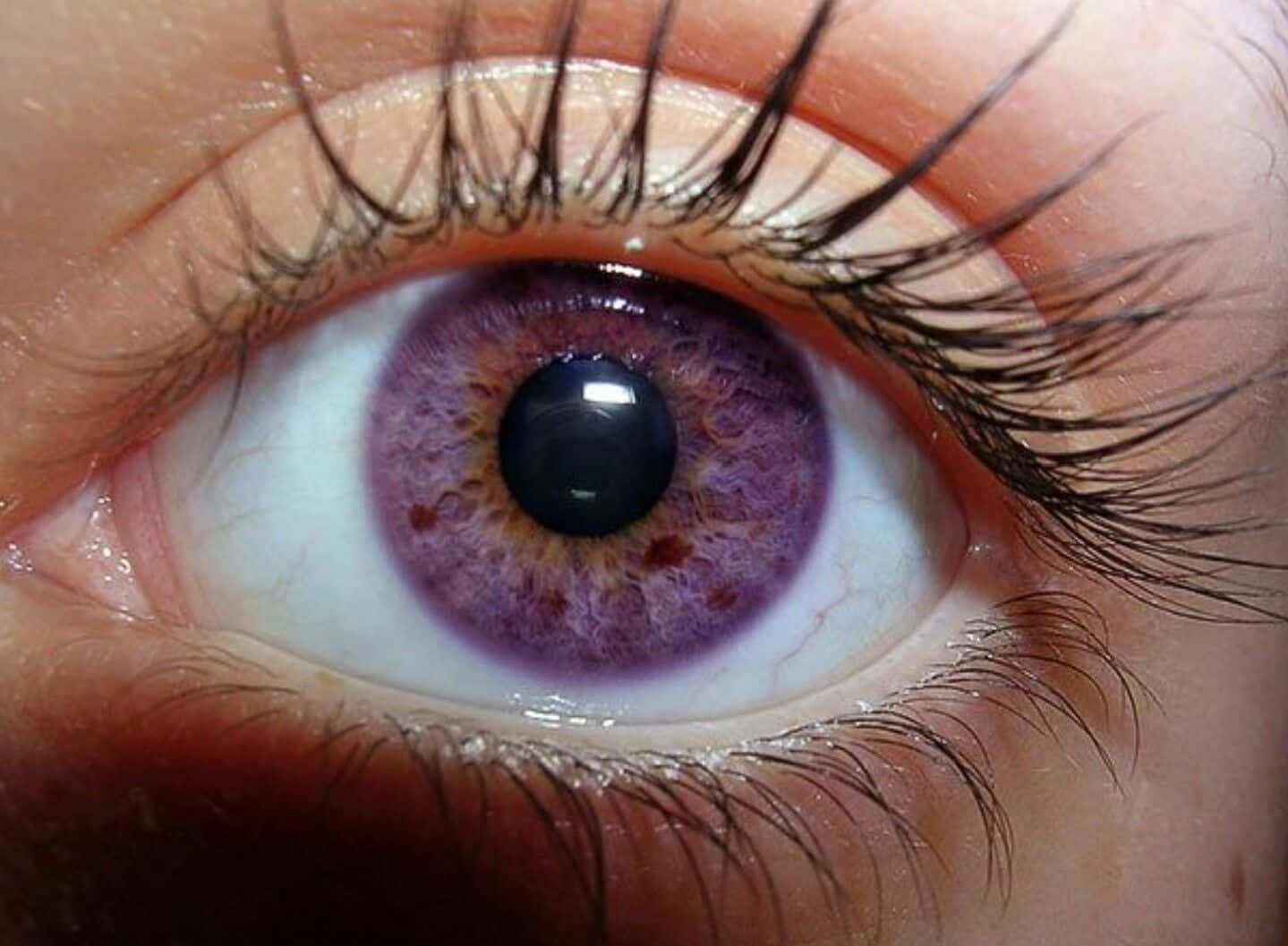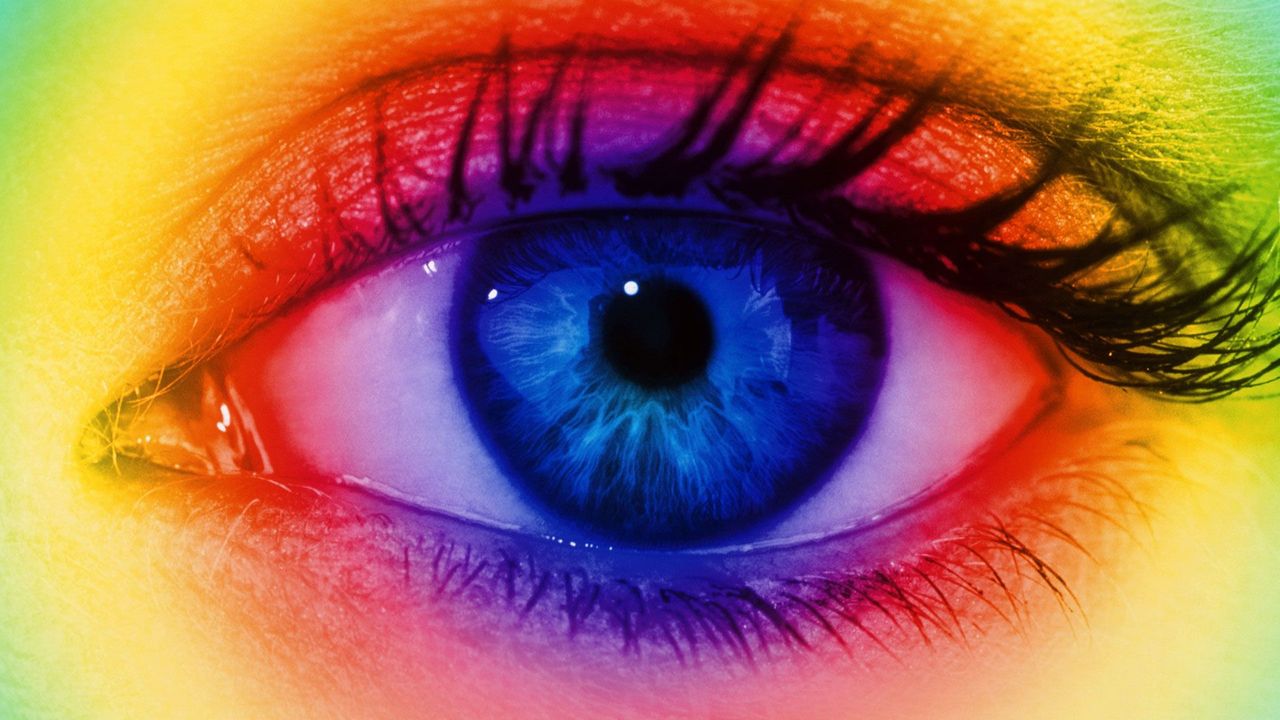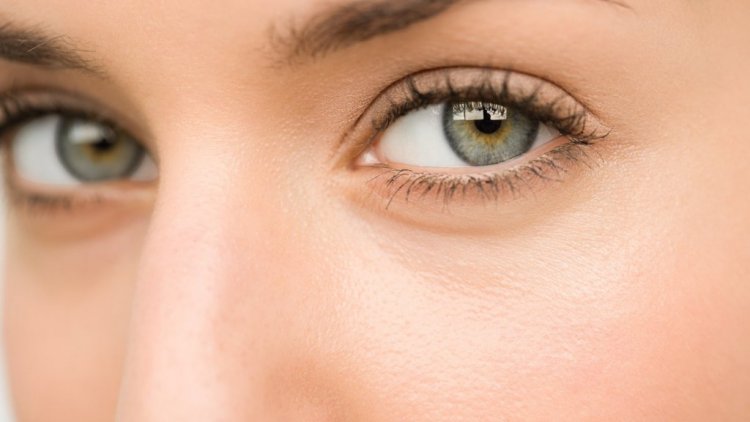The Wonders of the Human Eye
Introduction
The human eye, often dubbed as the window to the soul, is a marvel of evolution and intricate design. Within its small yet complex structure lies the power to perceive the world around us, capturing light and translating it into the vibrant images that shape our perception of reality. From its anatomical intricacies to its role in cognition and emotion, the eye stands as one of the most remarkable organs in the human body.
Anatomy of the Eye
At first glance, the eye may seem like a simple sphere, but its inner workings reveal a sophisticated array of components. The outermost layer, the sclera, provides structural support and protection, resembling a tough, white shell. Nestled within this protective casing is the cornea, a transparent dome that acts as a lens, refracting light onto the retina.
Behind the cornea lies the iris, a pigmented muscular structure responsible for controlling the size of the pupil. The pupil serves as the gateway for light to enter the eye, dilating or constricting in response to changes in illumination. Adjacent to the iris is the crystalline lens, which fine-tunes the focus of incoming light onto the retina, enabling clear vision at varying distances.
The interior of the eye is filled with a gel-like substance called the vitreous humor, which maintains its shape and provides structural support. Suspended within this fluid are the intricate structures of the retina, including photoreceptor cells known as rods and cones, which convert light into electrical signals. These signals are then relayed through the optic nerve to the brain, where they are interpreted as visual information.
Vision and Perception
Vision is not merely a passive process of light detection but an active and complex interaction between the eye and the brain. The brain’s visual cortex processes the raw sensory data received from the eyes, transforming it into coherent images and meaningful perceptions. This intricate neural network allows us to perceive colors, shapes, depth, and motion, providing us with a rich and detailed understanding of our surroundings.
The human eye possesses remarkable capabilities, including the ability to perceive a vast spectrum of colors. This feat is made possible by specialized photoreceptor cells called cones, which are sensitive to different wavelengths of light. Through the complex interplay of these cones, we are able to distinguish between a myriad of hues, from the deepest blues to the brightest yellows.
Depth perception, another vital aspect of vision, allows us to perceive the relative distances between objects in our environment. This ability is facilitated by binocular vision, which combines the slightly different perspectives provided by each eye to create a three-dimensional representation of space. Depth cues such as convergence, parallax, and stereopsis further enhance our perception of depth, enabling us to navigate and interact with our surroundings with precision and accuracy.
Beyond Sight: The Role of the Eye in Cognition and Emotion
The eye not only serves as a gateway to visual perception but also plays a significant role in cognition and emotion. Studies have shown that eye movements can provide valuable insights into cognitive processes such as attention, memory, and decision-making. For example, the pattern of eye movements known as saccades reflects the shifting focus of attention as we scan our environment and process visual information.
Furthermore, the eyes are instrumental in non-verbal communication, conveying a wealth of emotional cues through subtle changes in expression and gaze. The eyes have been described as the mirror of the soul, capable of expressing a wide range of emotions, from joy and sorrow to fear and surprise. The ability to interpret these cues is essential for social interaction and empathy, allowing us to connect with others on a deeper level.
In addition to their communicative function, the eyes also play a central role in the regulation of circadian rhythms and sleep-wake cycles. Specialized cells in the retina, known as intrinsically photosensitive retinal ganglion cells (ipRGCs), detect changes in light levels and send signals to the brain’s internal clock, helping to synchronize our biological rhythms with the natural cycles of day and night.
Challenges and Innovations in Eye Health
Despite its remarkable capabilities, the human eye is vulnerable to a myriad of disorders and diseases that can impair vision and quality of life. From refractive errors such as myopia and astigmatism to more serious conditions like glaucoma and macular degeneration, millions of people worldwide are affected by vision impairment.
Fortunately, advances in medical technology and research have led to significant improvements in the diagnosis, treatment, and management of eye disorders. Innovations such as LASIK surgery and intraocular lenses have revolutionized the field of vision correction, offering safe and effective alternatives to traditional eyeglasses and contact lenses.
Furthermore, ongoing research into the genetic and molecular mechanisms underlying eye diseases holds promise for the development of novel therapies and interventions. Gene therapy, stem cell transplantation, and retinal prostheses are just a few examples of cutting-edge approaches that may one day restore vision to those affected by vision loss.
The Future of Vision
As our understanding of the eye continues to deepen, so too will our ability to harness its full potential and address the challenges that lie ahead. From enhancing visual acuity and perception to unlocking the mysteries of consciousness and cognition, the study of the human eye holds boundless possibilities for scientific discovery and innovation.
In the coming years, advances in fields such as artificial intelligence, biotechnology, and regenerative medicine may usher in a new era of personalized eye care and vision enhancement. From customized treatment plans based on genetic predisposition to the development of bionic eyes capable of surpassing human limitations, the future of vision is bright with promise.
The human eye is a marvel of evolution and design, offering us a window into the rich tapestry of the world around us. From its intricate anatomy to its role in perception, cognition, and emotion, the eye stands as a testament to the wonders of the natural world. By unlocking its secrets and harnessing its full potential, we can ensure that future generations continue to benefit from the gift of sight.
The Eye: A Gateway to Understanding
As we delve deeper into the complexities of the human eye, we uncover not only its physical intricacies but also its profound significance in the human experience. Beyond its role as a sensory organ, the eye serves as a gateway to understanding the mysteries of perception, cognition, and emotion.
Perception and Reality
The eye serves as our primary means of perceiving the world, shaping our understanding of reality through the interpretation of light and color. However, the relationship between perception and reality is not always straightforward. Optical illusions, for example, demonstrate how the brain can be deceived by visual stimuli, leading us to perceive shapes, colors, and motion that defy physical reality.
Moreover, recent research in the field of neuroscience has shed light on the brain’s role in shaping our perceptions. The phenomenon of neuroplasticity, for instance, suggests that our perceptions are not fixed but can be influenced by our experiences, beliefs, and cultural context. This dynamic interplay between the sensory input from the eyes and the cognitive processes of the brain underscores the complexity of human perception.
Cognition and Visual Processing
The eye is not merely a passive receiver of visual information but an active participant in the process of cognition. Through a series of complex neural pathways, visual signals from the eyes are transmitted to various regions of the brain, where they are integrated with other sensory inputs and cognitive processes.
For example, the ventral stream of visual processing, also known as the “what” pathway, is responsible for identifying objects and recognizing faces. This pathway, which includes areas such as the fusiform face area (FFA), allows us to distinguish between familiar faces and objects, providing vital cues for social interaction and communication.
Conversely, the dorsal stream, or “where” pathway, is involved in spatial awareness, motion detection, and action planning. This pathway, which includes regions such as the posterior parietal cortex (PPC), enables us to navigate our environment, track moving objects, and coordinate our movements with precision.
Emotion and Expression
The eyes are not only instrumental in the perception of emotions but also in the expression and communication of emotional states. Research has shown that the muscles surrounding the eyes play a crucial role in conveying a wide range of emotional cues, from happiness and surprise to sadness and fear.
Moreover, the gaze of the eyes can communicate subtle nuances of emotion, such as sincerity, empathy, or affection. The ability to interpret these cues is essential for social interaction and empathy, allowing us to connect with others on a deeper level and navigate the complex landscape of human relationships.
Furthermore, the eyes are often referred to as the “window to the soul,” a reflection of the profound connection between vision and consciousness. Through the act of seeing and being seen, we forge connections with others, share our innermost thoughts and feelings, and ultimately, affirm our shared humanity.
Preserving Vision: Challenges and Innovations
Despite its remarkable capabilities, the human eye is susceptible to a myriad of disorders and diseases that can impair vision and quality of life. From common refractive errors like myopia and hyperopia to more serious conditions such as glaucoma, cataracts, and retinal degenerative diseases, millions of people worldwide are affected by visual impairment.
The prevalence of these eye disorders underscores the importance of ongoing research and innovation in the field of ophthalmology. Fortunately, advancements in medical technology and treatment modalities have revolutionized the diagnosis, management, and prevention of eye diseases.
One of the most significant breakthroughs in recent years is the advent of minimally invasive surgical techniques for cataract removal and intraocular lens implantation. These procedures, such as phacoemulsification, offer patients faster recovery times, reduced risk of complications, and improved visual outcomes compared to traditional cataract surgery.
Similarly, the development of novel drug therapies and biologics has transformed the treatment landscape for conditions such as age-related macular degeneration (AMD) and diabetic retinopathy. Anti-VEGF medications, for example, have been shown to effectively slow the progression of neovascular AMD by inhibiting the growth of abnormal blood vessels in the retina.
Furthermore, advances in regenerative medicine and stem cell research hold promise for the restoration of vision in patients with degenerative retinal diseases. Clinical trials investigating the use of stem cell-derived retinal cells for retinal regeneration are currently underway, offering hope for a future where vision loss may be reversible.
Addressing Global Disparities in Eye Care
Despite these remarkable advancements, access to quality eye care remains a significant challenge, particularly in low-resource settings and underserved communities. Millions of people worldwide lack access to basic eye care services, leading to preventable blindness and visual impairment.
Efforts to address this disparity include initiatives aimed at increasing awareness, improving infrastructure, and training healthcare providers in the diagnosis and management of eye diseases. Organizations such as the World Health Organization (WHO) and the International Agency for the Prevention of Blindness (IAPB) play a crucial role in advocating for universal eye health and implementing strategies to reduce avoidable blindness worldwide.
Moreover, the integration of eye care services into primary healthcare systems and the use of telemedicine and mobile health technologies have the potential to expand access to eye care in remote and underserved areas. By leveraging digital platforms and innovative delivery models, healthcare providers can reach populations in need and provide essential eye care services, including screenings, diagnostics, and treatment.
Looking to the Future
As we look to the future of eye care, it is essential to recognize the interconnectedness of vision with broader issues such as aging, chronic disease, and global health equity. By adopting a holistic approach that addresses the social determinants of health and promotes interdisciplinary collaboration, we can work towards a future where everyone has access to comprehensive eye care services and enjoys the benefits of good vision.
Moreover, continued investment in research and innovation is critical to advancing our understanding of eye diseases and developing new treatments and interventions. From gene therapy and regenerative medicine to artificial intelligence and digital health technologies, the possibilities for improving vision and preventing blindness are endless.
The human eye is a marvel of evolution and design, offering us a window into the world and enriching our lives in countless ways. By investing in eye health and prioritizing access to quality care for all, we can ensure that future generations continue to benefit from the precious gift of sight.
Educating for Eye Health and Awareness
A crucial aspect of preserving vision is education and awareness about eye health and preventive measures. Public health campaigns and community outreach programs play a vital role in educating individuals about the importance of regular eye exams, early detection of eye diseases, and adopting healthy lifestyle habits to maintain optimal vision.
School-based vision screening programs are particularly effective in identifying vision problems in children at an early age, allowing for timely intervention and treatment. By detecting refractive errors, amblyopia (lazy eye), and other vision disorders early on, these programs help prevent long-term vision impairment and support children’s academic success and overall well-being.
Furthermore, raising awareness about the importance of protective eyewear and UV protection can help prevent eye injuries and reduce the risk of conditions such as cataracts and age-related macular degeneration later in life. Simple measures such as wearing sunglasses with UV protection and safety goggles during sports and recreational activities can significantly reduce the risk of eye damage and preserve vision for years to come.
Empowering Individuals for Self-Care
Empowering individuals to take an active role in their eye health is essential for preventing vision loss and promoting overall well-being. Encouraging healthy lifestyle habits such as maintaining a balanced diet, exercising regularly, avoiding smoking, and managing chronic conditions like diabetes can significantly reduce the risk of eye diseases and complications.
Moreover, educating individuals about the importance of proper eye hygiene and care can help prevent common eye infections and conditions such as dry eye syndrome. Simple practices such as washing hands frequently, avoiding eye rubbing, and taking regular breaks from digital screens can help alleviate eye strain and discomfort and promote long-term ocular health.
Promoting Research and Innovation
Investment in research and innovation is critical for advancing our understanding of eye diseases and developing new treatments and interventions. Collaborative efforts between researchers, clinicians, industry partners, and advocacy organizations are essential for accelerating progress in the field of ophthalmology and improving outcomes for patients with vision impairment.
Technological innovations such as artificial intelligence, virtual reality, and telemedicine hold tremendous potential for transforming the delivery of eye care and expanding access to services in underserved areas. By harnessing the power of digital health technologies, we can overcome barriers to care, improve diagnostic accuracy, and enhance patient outcomes.
Furthermore, ongoing research into the genetic and molecular mechanisms underlying eye diseases is paving the way for personalized medicine approaches and targeted therapies. Precision medicine initiatives aim to identify genetic risk factors for eye diseases, develop biomarkers for early detection, and tailor treatment plans to individual patients’ unique genetic profiles.
Conclusion: A Vision for the Future
In conclusion, the human eye is a remarkable organ that plays a central role in shaping our perception of the world and enriching our lives in countless ways. By investing in education, research, and innovation, we can ensure that future generations continue to enjoy the precious gift of sight and live healthier, more fulfilling lives.
From early childhood screenings to innovative treatments and preventive measures, there is much that can be done to preserve vision and prevent avoidable blindness. By working together to raise awareness, promote healthy behaviors, and advance scientific knowledge, we can build a future where everyone has access to quality eye care and enjoys the benefits of good vision.
Ultimately, the journey towards vision health is a collective endeavor that requires the commitment and collaboration of individuals, communities, healthcare providers, policymakers, and researchers worldwide. By joining forces and embracing a shared vision for a world where everyone can see clearly and thrive, we can make significant strides towards achieving our goal of eliminating preventable blindness and ensuring a brighter future for all.
